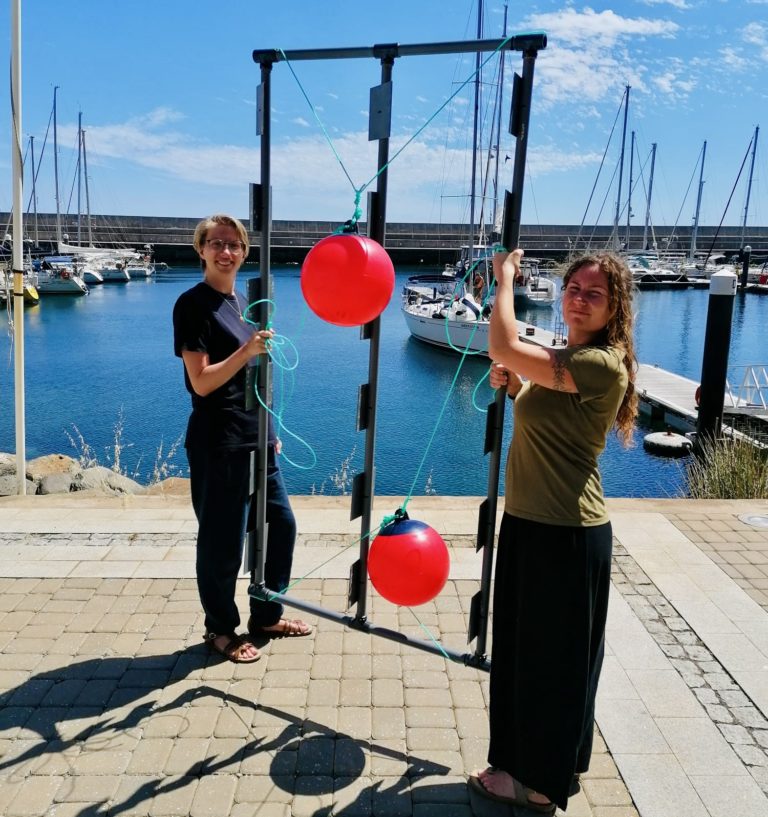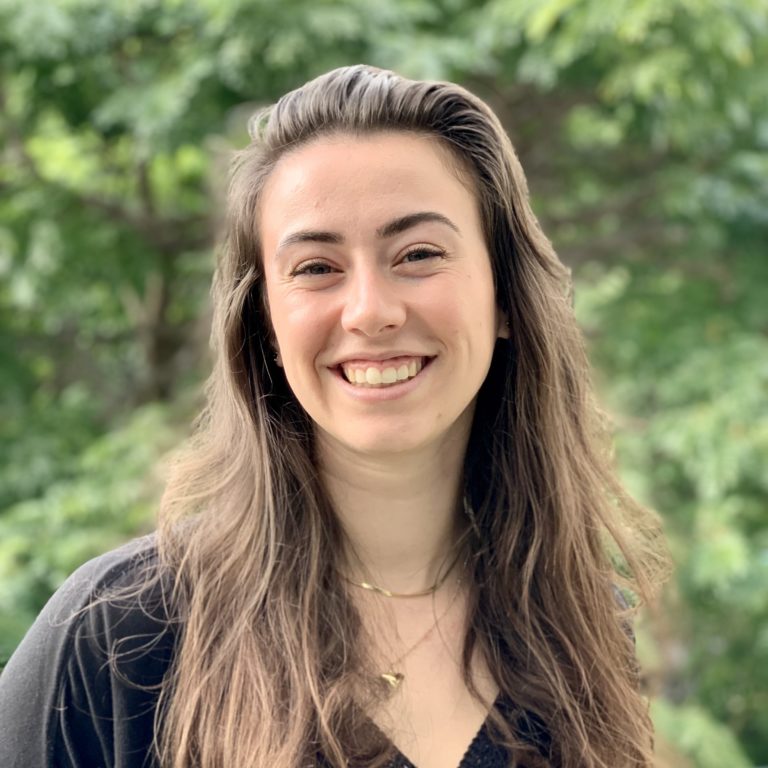Whales and dolphins and models – oh my!
Modeling is not for everyone. It’s a career filled with high expectations and mixed messages, where success is a matter of interpretation, where models are easily criticized, and, of course, subject to an endless stream of photographs. But Marc Fernández is not one to shy from a challenge! We caught up with Marc to learn more about his work and what draws him to modeling. Ecological modeling, that is.
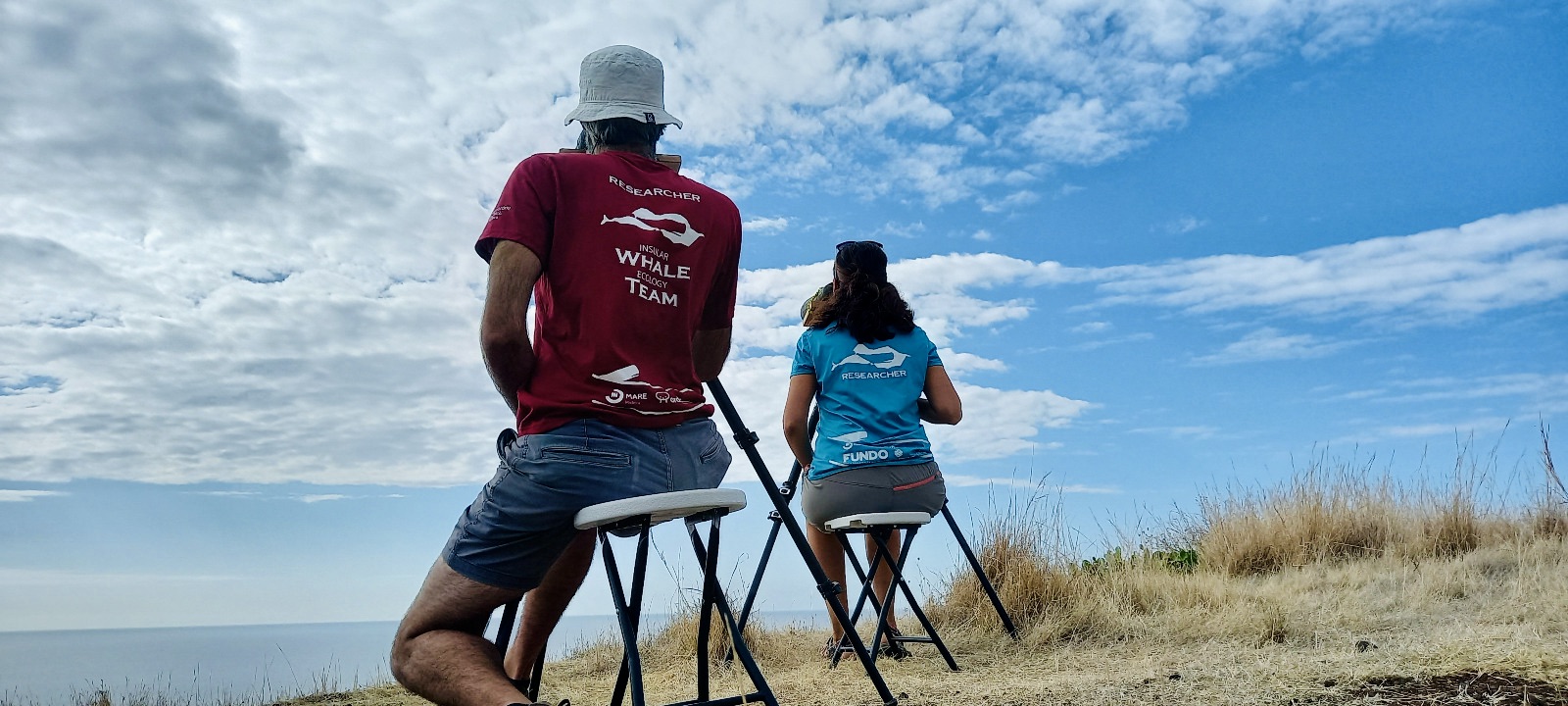
Hello Marc! Let’s start with a bit about your research and areas of interest.
That’s a lot, actually! What I do best is marine ecological modeling, mostly around whales and dolphins (collectively known as ‘cetaceans’). I’m also interested in data collection from citizen science, which is connected to ecological modeling as you need data to do the models. My overarching interest is in understanding how marine life use their habitat, and mostly open-ocean (or ‘pelagic’) habitats.
Can you give an example of some of the work you’ve done?
I’m trying to model some of the most basic behaviors of whales and dolphins – namely, where and when they are searching for food or mates. One thing about cetaceans is that they are highly mobile. They move a lot. A dolphin can move more than 100 or 200 km per day. So it’s a huge challenge to understand why they are here and not there – because they can be there, too! That’s what my work is trying to figure out.
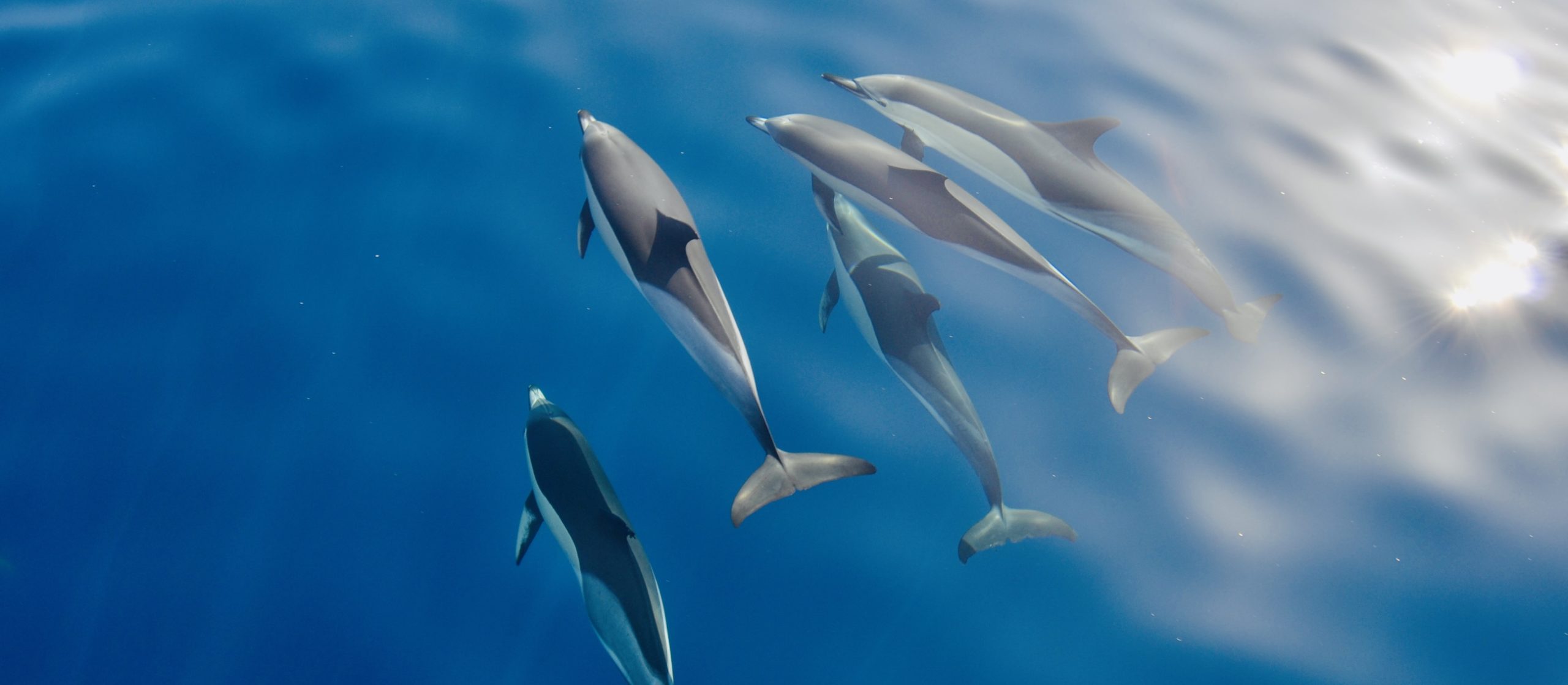
Common dolphins by Filipe Alves
What’s interesting about studying these species?
It’s interesting because, really, we don’t know anything – we’re just scratching the surface of what’s going on. These species are very important for ocean ecosystems. They’re at the top of the food chain, so they help regulate their environments. They also play a very important role in carbon sequestration, which is linked to the planetary carbon cycle and climate change. Knowing more about these animals, protecting them and helping their populations recover needs to be a priority. Whales were hunted for centuries and some populations are finally starting to recover, but we need to understand them to be able to do this better and quicker. The implications are not just regional, but global.
What are the advantages of doing your research from Madeira?
In general, all oceanic islands are interesting places to study cetaceans, but Madeira is special because the conditions to study at sea are so good. We just need a dinghy to go out to very deep waters and study deep-diving cetaceans. These animals typically dive 400m to 1,000m in depth (sometimes they go over 2,000m) and to get to these depths from shore takes a matter of minutes. Whereas, if you’re in the mainland, you have to sail a long time and the sea’s usually very rough. Madeira’s an excellent place to study deep-sea ecosystems and deep-diving cetaceans.
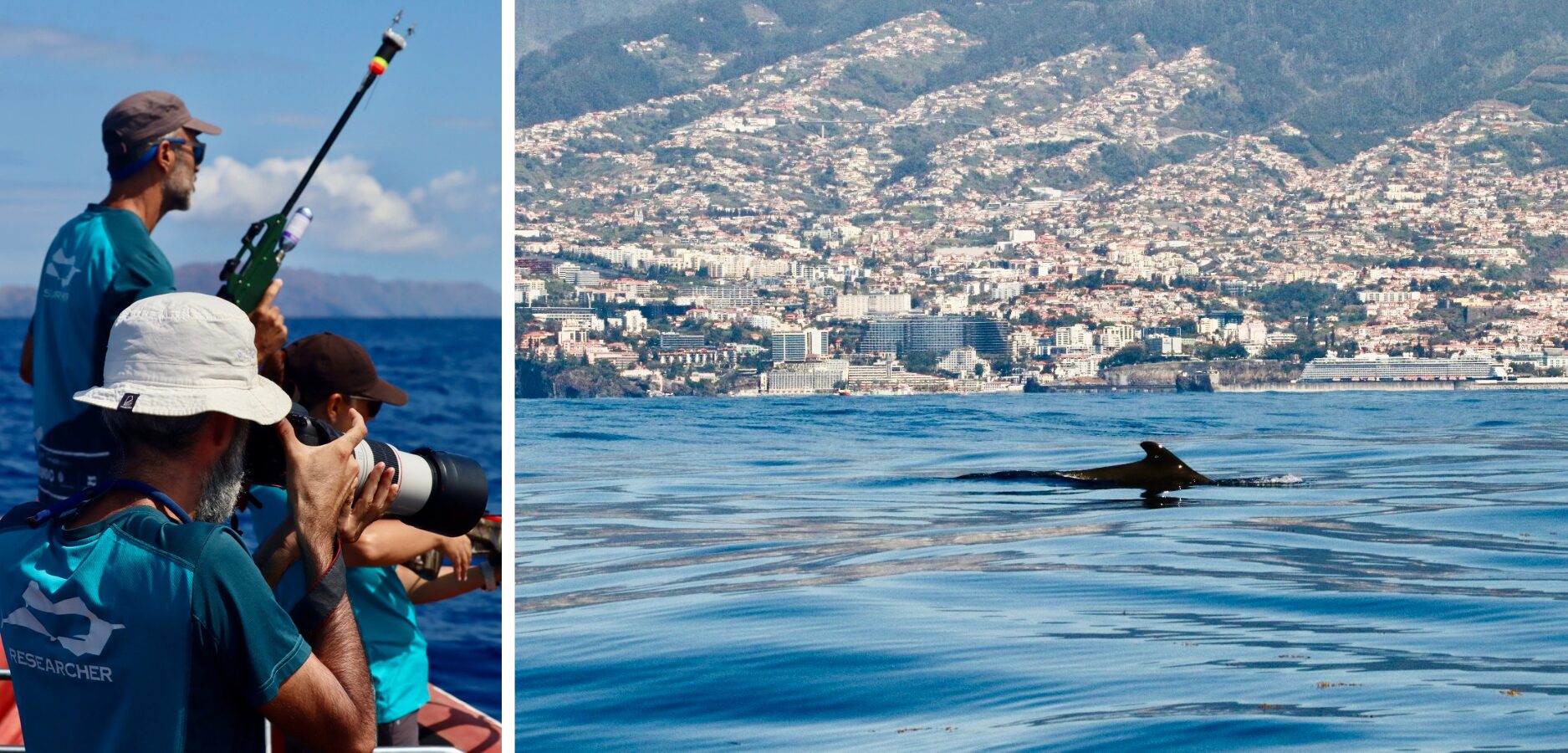
What is it about marine research that gets you out of bed in the morning?
It’s a challenge! The ocean covers 70% of the planet and we still know so little about it because it’s a huge challenge to study this environment and the life within it.
With every challenge comes a setback. Can you describe a setback you’ve had?
Oh, there are lots. We’re currently doing a review for the MIMA project (MImicry of MAcroplastics with the preys of deep-diving predators) to compile all the studies of marine mammals that have been stranded with plastic in their stomachs. It’s been a huge headache because the data is a mess. Like, someone reports there’s plastic in the stomach of 10 dolphins, but they don’t say how much, and I’m here trying to answer questions like, “Do deep-diving cetaceans eat more plastic than those that don’t dive as much?” I look at the data and it’s like, “oof”, I don’t know if we have enough.
How can citizen science platforms like Monicet help the data problem?
One of the problems of working at sea is that it’s very costly. It requires a lot of time and resources. We will never be able to go out to sea every day to do dedicated surveys on whales and dolphins. In 2009, we created the Monicet platform in the Azores, partnering with whale watching companies to collect the data they’re getting while out at sea every day. And – it’s perfect! (Laughs) No, it’s not perfect, but it gives us a picture of what’s going on.
My way of looking at this – when you do a dedicated scientific campaign, you have a high-resolution, digital photograph with all the details. With citizen science data, you have a shaky, out-of-focus YouTube video. But it’s a video. So it gives you a lot of other information that the photo can’t. Combining them, you get the best of both worlds.

I like that citizen science involves more people in science as well.
Yes, one of the cool things about Monicet is that whale watching companies are using it to answer their own questions. The companies are able to look at their own data (we show them some graphs with their sightings) and they start getting curious, wanting to know more. Citizen science creates a spark that gets people to ask questions and do things they didn’t before.
Do you have a favorite marine animal?
Oh gosh, that’s hard! Among cetaceans, I’m really fascinated by the deep-divers. They spend some time at the surface, but then they leave us and go into a totally different world – one that’s almost completely unknown to us. Of them? I’ve always been very fascinated by sperm whales. They’re very culturally complex, they move a lot, they do things we don’t understand. One day, I hope to answer more of the mysteries around sperm whales.
Looking into the future, what is your research priority?
I think nowadays it’s very important to have science applied to conservation. Because we’re in a critical moment, and we have the power to make a positive impact. We are responsible for climate change, and if we created it, then we have the capacity to solve it. We just have to want to do it.
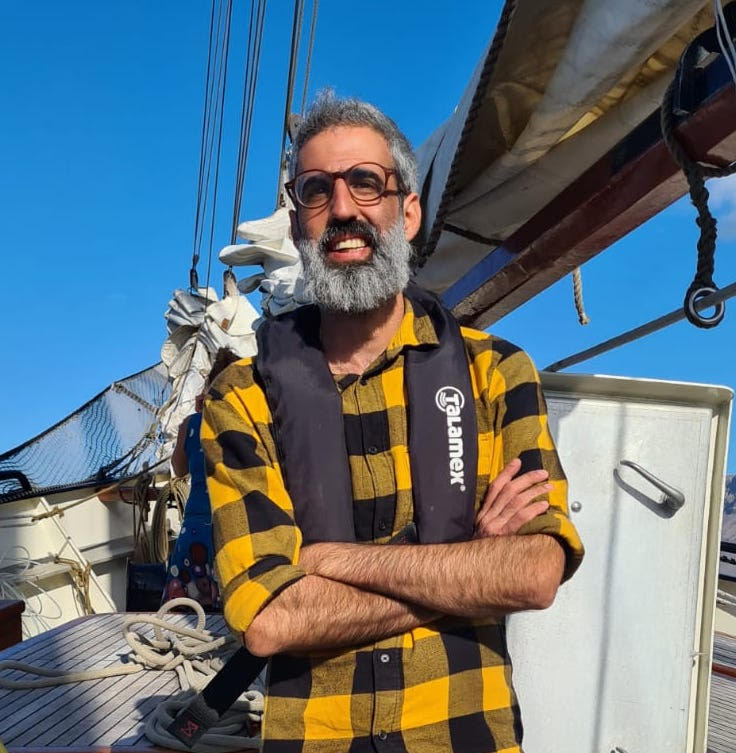
Marc Fernández is a postdoctoral researcher on our Marine Megafauna & Open Ocean team. He completed his PhD at the University of the Azores, he co-founded one of the first citizen science platforms for marine research (Monicet, which collects data from whale watching companies) and you can watch Marc on Netflix! (He’s one of the scientific consultants in the documentary, The Last Whalers of São Miguel.)

